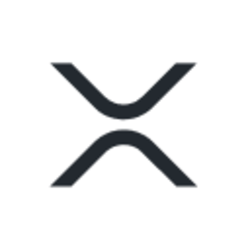Ripple’s XRP Ledger enables tokenized structured credit in Brazil through VERT Capital’s issuance of over $40 million in pension-backed receivables on the XRPL EVM Sidechain, expanding compliant blockchain use in Latin America’s financial markets.
-
XRP Ledger tokenization in Brazil marks a key step in regulated asset issuance.
-
VERT Capital’s second tokenized fund uses XRPL for efficient, compliant receivables securitization.
-
The issuance holds $40 million in assets, with potential growth to $190 million amid rising institutional interest.
Discover how XRP Ledger tokenization in Brazil revolutionizes structured credit markets with VERT Capital’s $40M issuance on XRPL. Explore compliance, innovation, and growth—read now for crypto finance insights!
What is XRP Ledger Tokenization in Brazil?
XRP Ledger tokenization in Brazil involves using the XRPL and its EVM Sidechain to digitize real-world assets like pension-backed receivables, as demonstrated by VERT Capital’s recent $40 million issuance. This regulated process securitizes low-risk obligations from Brazil’s federal pension system into blockchain-based funds, enhancing liquidity and accessibility in structured credit markets. It builds on XRPL’s capabilities for secure, efficient tokenization while adhering to local securities regulations.
How Does the XRPL EVM Sidechain Support Brazilian Financial Innovation?
The XRPL EVM Sidechain facilitates seamless integration of Ethereum Virtual Machine compatibility with XRPL’s native speed and low costs, enabling VERT Capital to issue tokenized FIDCs—Fundo de Investimento em Direitos Creditórios, or investment funds in credit rights. This second issuance brings more than $40 million in assets on-chain, backed by secure INSS pension receivables, which are among the lowest-risk pools in Brazil. According to reports from VERT and partner BYX, the fund could expand by 500% to approximately one billion BRL, or $190 million, driven by institutional demand. RippleX, Ripple’s development arm, emphasizes that this setup ensures full compliance, with on-chain settlement and documentation reducing intermediaries and operational risks.
Experts in blockchain finance note the significance of this move. As one industry analyst from a major financial institution stated, “Tokenizing receivables on XRPL demonstrates how distributed ledger technology can modernize legacy systems in emerging markets like Brazil, where regulatory sandboxes foster innovation without compromising oversight.” This aligns with global trends, as seen in Ripple’s broader initiatives for tokenized assets, from stablecoins to real estate, all integrated within compliant frameworks.
The process begins with identifying eligible receivables from the INSS system, which are then securitized into FIDCs. These are tokenized on the XRPL EVM Sidechain, allowing automated purchases and recurring investments. VERT Sign, a new blockchain-based tool introduced in this partnership, handles digital signing and compliance verification directly on-chain, streamlining what traditionally takes days into near-instantaneous transactions. Brazil’s securities commission, the CVM, supports such advancements through its LEAP program, a regulatory sandbox that tests blockchain applications in supervised markets. VERT Capital and Ripple are active participants, ensuring their solutions meet stringent standards for investor protection and market integrity.
Frequently Asked Questions
What Advantages Does XRP Ledger Tokenization Offer for Brazil’s Structured Credit Market?
XRP Ledger tokenization in Brazil provides faster settlement, reduced costs, and greater transparency for structured credit instruments like FIDCs. By bringing $40 million in pension receivables on-chain, it enables fractional ownership and automated compliance, attracting institutional investors while minimizing risks associated with traditional securitization processes.
Why Is the XRPL EVM Sidechain Ideal for Tokenizing Brazilian Pension Receivables?
The XRPL EVM Sidechain combines XRPL’s proven scalability and security with EVM compatibility, making it perfect for tokenizing low-risk Brazilian pension receivables. It supports on-chain documentation and settlement for FIDCs, ensuring regulatory compliance through tools like VERT Sign, and positions Brazil as a leader in Latin American blockchain finance.
Key Takeaways
- Regulated Expansion: VERT Capital’s $40 million tokenized issuance on XRPL highlights Brazil’s growing role in compliant crypto asset tokenization.
- Innovation in Tools: The introduction of VERT Sign enables automated, blockchain-verified signing for recurring receivables purchases, boosting efficiency.
- Future Growth Potential: With scalability to $190 million and CVM sandbox involvement, this initiative signals broader adoption of XRPL in Latin American finance.
Conclusion
This development in XRP Ledger tokenization in Brazil underscores Ripple’s commitment to building versatile infrastructure for tokenized assets, particularly in the XRPL EVM Sidechain’s application to structured credit markets. By partnering with VERT Capital to securitize pension-backed FIDCs, the ecosystem demonstrates practical blockchain utility in one of Latin America’s largest economies. As institutional interest grows and regulatory frameworks evolve through programs like CVM’s LEAP, expect further innovations that enhance financial inclusion and efficiency—stay informed on these trends to navigate the evolving landscape of global crypto finance.
